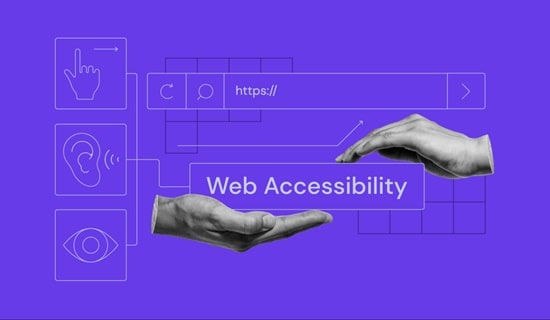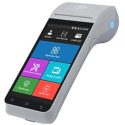Expanding Web Accessibility Testing Beyond Chrome DevTools: Exploring Third-Party Assessment Tools
Are you looking to expand your vision for Accessibility Testing Chrome? You can easily choose a third-party tool from the hundreds of options available in the market. This inclusion will help you improve your site’s web accessibility. As we all know, web accessibility standards ensure that websites are usable by everyone, including those with specific disabilities.
Although Chrome DevTools provides some built-in accessibility features, third-party tools will further expand these to generate more effective results. In this article, we will mention these tools and their features, benefits, and the process of integrating them into the web development workflow.
Understanding Web Accessibility

Before we explore the third-party options for integrating web accessibility, let us shift our limelight toward the basics of web accessibility testing. This process refers to the addition of inclusive practices for removing barriers that prevent interactions with or access to websites by persons with specific disabilities.
If you follow the correct practices for designing, developing, and editing your websites, all of your users will have equal access to the information and functionality of these websites.
The Importance of Web Accessibility
Now that we have understood the basics of web accessibility let us shift our focus toward some of the most important factors that justify the inclusion of web accessibility standards, keeping in mind the modern requirements of the app development and testing industry:
- It is unknown to none that most nations have stringent laws and regulations that enforce the implementation of web accessibility. Some of the most important laws include the Americans with Disabilities Act (ADA) in the United States and the Web Content Accessibility Guidelines (WCAG) implemented globally.
- The latest survey from a very reputable organization shows that almost 15% of the total world population has some sort of disability. So, implementing accessible websites can help app-developing companies broaden their target audience massively.
- Websites that have proper accessibility standards often offer enhanced Search Engine Optimizations. This implementation also helps the testers improve the website’s visibility in the search results.
- All the features that help to improve the accessibility of a website, including improved navigation, also help enhance the website’s overall user experience.
Limitations of Chrome DevTools for Accessibility Testing
Chrome DevTools is a compelling suite for implementing web development. This suite also offers several accessibility features, including the ability to inspect the accessibility tree, audit for issues using Lighthouse, and simulate different color vision deficiencies. However, the accessibility standards of Chrome DevTools are massively limited in the following segments:
- DevTools might not cover all the accessibility issues available in the current market. This obstacle is permanently visible for those who require a more nuanced understanding.
- DevTools does not offer comprehensive features for automating the accessibility test cases compared to other specialized tools readily available in the present market.
- Regarding test reporting, DevTools does not generate comprehensive test reports for accessibility test cases. These reports do not show the issues currently available in the application and their possible resolutions.
- Using Chrome DevTools to implement accessibility testing will severely limit the integration with other development and testing workflows.
To address these limitations, testers and developers can utilize third-party tools to implement web accessibility.
Third-Party Web Accessibility Assessment Tools
Let’s take a quick look at the present development and testing industry. We can say that several third-party tools offer more comprehensive and robust solutions for web accessibility testing. To shed more light on this segment, we have selected a few of the most notable mentions in this segment:
1. Axe by Deque Systems
This is an open-source accessibility testing tool that the testers can integrate into various development environments. The main selling point of this tool is that it is designed to be lightweight and easy to use to remove the learning curve for newcomers in this segment. Some of the significant features of this tool are as follows:
- With Axe, the testers can run automated accessibility testing and also identify some of the most common issues that can be present within the application infrastructure.
- This tool works with multiple platforms, including browser versions like Mozilla Firefox and Google Chrome. The testers can also easily integrate it with the Selenium test suite for automation testing.
- After executing the test instances, Axe will generate detailed reports on some of the major accessibility issues that will be present within the application infrastructure. It will also sort the topics based on their severity and potential fixes.
- All the test cases generated and conducted with Axe will comply with WCAG 2.1 standards.
Let us now shift our focus toward some of the significant benefits of using Axe for implementing accessibility testing:
- Installing as a browser extension or using the npm package installer is very simple. This is because it seamlessly integrates with the continuous integration and continuous deployment pipelines.
- The developers can write custom rules and integrate them into their testing framework using Axe.
- Since it is an open-source tool, it comes with strong and massive community support and detailed documentation. So, the new testers can always refer to these resources whenever they are struck with any feature.
2. WAVE by WebAIM
WAVE is a web accessibility evaluation tool that WebAIM exclusively develops. This tool is available as a browser extension or as an online service.
To further improve our knowledge about the efficiency of this tool, we have listed some of its significant features:
- While using this tool, the developers can generate visual feedback by overlaying icons and indicators directly on the web page. It is possible to detect discrepancies within the UI elements or their proper placements using this process.
- Like Axe, this tool also generates detailed explanations of issues and guidelines that may be present within the infrastructure. It also provides possible fixes that can help the testers resolve the problems.
- This tool comes with native multilingual support. It supports multiple languages globally. This means that despite your language preferences, you can freely use the features of this tool.
- Since it is an available extension, you can easily integrate WAVE with many popular web browsers, including Mozilla Firefox and Google Chrome.
To further analyze our understanding of WAVE, let us now start understanding some of the significant benefits of using this tool:
- The intuitive user interface makes it very easy to understand and also addresses some of the major accessibility issues that might be present in the application infrastructure.
- The educational side of this tool helps testers learn about accessibility standards through detailed issue descriptions. It also provides sample test cases so the testers can understand the functioning of its features.
- Including immediate feedback allows the testers to implement accurate time testing and gather feedback about some of the issues during the development and testing process.
3. Tenon
Tenon focuses on the commercial side of web accessibility testing. Therefore, its main agenda is to integrate accessibility testing into the final development process of the application project. Some of the significant features of this tool are listed below:
- It provides an API that allows the testers to integrate accessibility testing into various development workflows to implement seamless data transfer and data management.
- Using this tool, testers can generate extensive reports, recommendations, and code examples. These inclusions are crucial for implementing fixes before the app is forwarded to the deployment process.
- This tool can run automated test instances on various software like components, web pages, or entire websites.
- While using this tool, the testers can create customized rule sets tailored to their specific preferences or the requirements of their applications currently being developed or tested.
4. LambdaTest
LambdaTest is an AI-powered test orchestration and execution platform that lets you run manual and automated tests at scale with over 3000+ real devices, browsers, and OS combinations. This platform allows testers to execute web accessibility test cases on remote servers. We have mentioned some of the most important features below:
- With this platform, testers can use Selenium, Appium, Cypress, or Playwright to automate the accessibility of test cases.
- The AI-orchestrated test infrastructure of LambdaTest ensures efficient test data execution and management.
- It also has various other unique features like comprehensive test reporting, parallel test execution, real-time test logging, and native bug tracking.
Integrating Third-Party Tools into Your Workflow
The testers can enhance the development workflow by including third-party accessibility tools. This inclusion will improve the quality and inclusivity of the web projects.
● Early Testing
By conducting accessibility testing in the earlier phases, the testers can identify and address problems before they become serious concerns.
● Comprehensive Testing
To further improve the standards of web accessibility testing, we highly recommend the testers use a combination of different tools. This inclusion will allow them to use the advantages of multiple tools to perfect the test execution process.
● User Testing
To ensure that all the test cases are accurate, the testers must involve users with disabilities while testing the website’s performance. The feedback of these people can provide massively valuable insights that automated test cases are bound to miss.
● Manual Testing
The testers need to combine manual testing and automation testing. This is because although tools can identify various issues, some require human developers’ judgment to evaluate them. A perfect example is assessing the usability of a website while using screen readers.
● Training and Education
We advise app developing companies to regularly train their development and quality assurance teams according to the changing accessibility standards and best practices. The testers can also use insights and recommendations from tools like WAVE and Lighthouse to educate themselves.
The Bottom Line
Considering all the points in this article, we can safely conclude that web accessibility testing is essential for creating inclusive design experiences. All the tools we stated in this article will provide more comprehensive and robust solutions than Chrome DevTools.
By integrating these tools into your development workflow, you can abide by the best practices, ensure that your websites are accessible to all users, and enhance usability and legal compliance.



